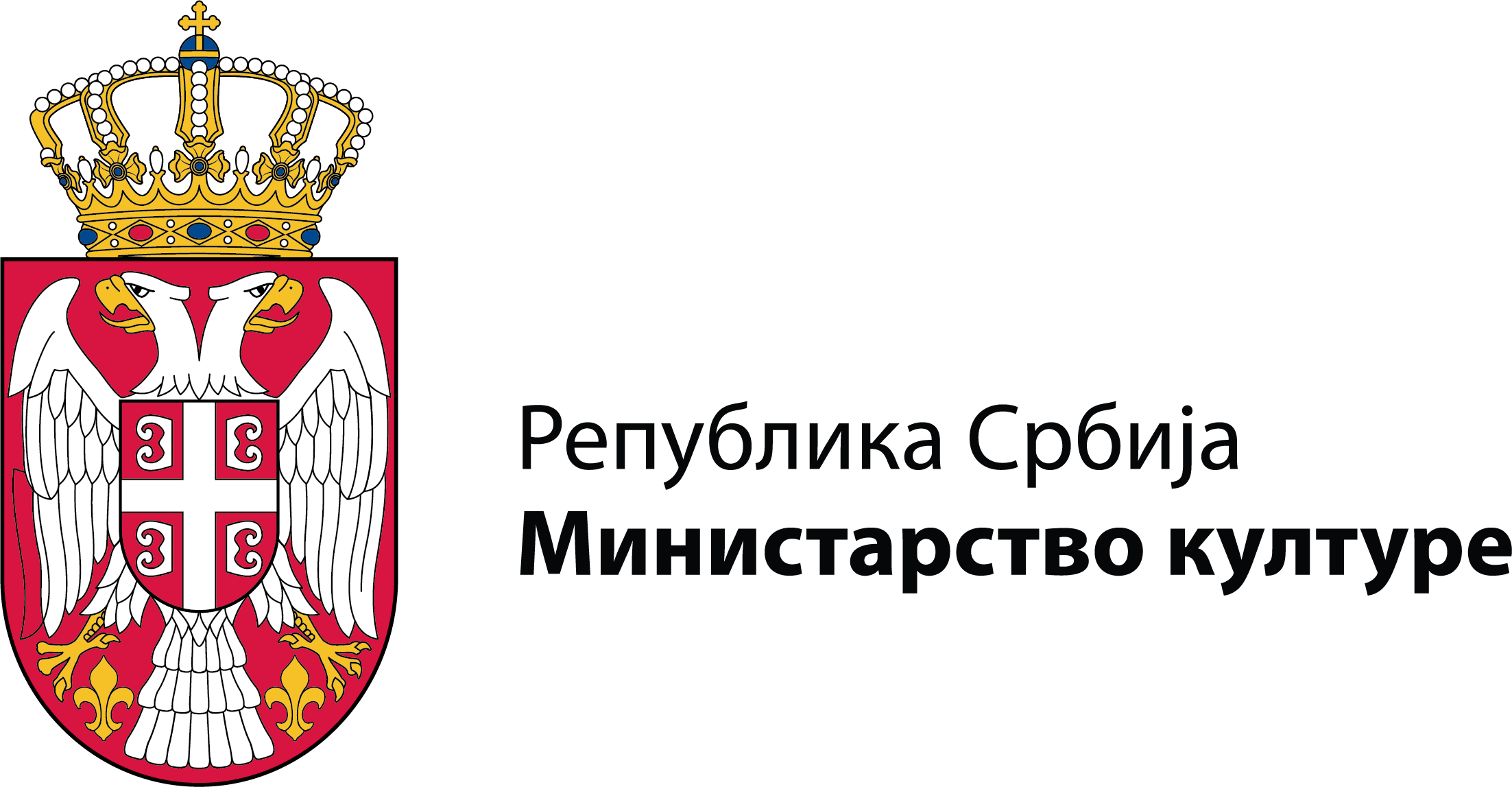Bride's cap
Inv. No. 33604
Cap made of silk brocade with a floral pattern, decorated with gold embroidery, pearls, beads, sequins, and artificial flowers. On the back, it features two long and two short ribbons arranged in a decorative composition with floral motifs, ornaments, and the Cyrillic initials “Ч” and “М,” along with the year 1895. Such caps were worn by brides on their wedding day and shortly thereafter on festive occasions, serving as a distinctive element of Serbian traditional dress in Banat at the end of the 19th century.
Melenci, Zrenjanin, Banat
Year 1895
Apron
Inv. No. 34889
Long front apron made of multicolored wool and cotton, woven with geometric ornaments. It was worn over the skut (a type of skirt). Upon acquisition in 1931, it was recorded as a "common type" of apron.
Dobrinci, Srem, Vojvodina
Late 19th – early 20th century
Skirt
Inv. No. 34846
Wide woolen skirt with a decorative band near the hem. It was worn over an under-skirt made of white linen.
Stari Banovci, Stara Pazova, Srem
Early 20th century
Gunj – woolen coat
Inv. No. 36256
Long cloth overcoat (gunj) with sleeves and a collar, trimmed with broadcloth and cord. It was worn by wealthier Serbs on formal occasions until the 1950s.
Bela Crkva, Banat, Vojvodina
1935
Jelek – waistcoat
Inv. No. 42656
Short fitted vest with a gathered hem, made of satin and decorated with lace passementerie ribbons. It is part of the traditional festive Slovak folk costume. Worn by Katarina Kovač Varga, born in 1892, as a young married woman in the village of Bački Petrovac.
Bački Petrovac, Bačka, Vojvodina
Early 20th century
Apron – ketenj
Inv. No. 4031
Child’s apron made of red silk satin, decorated with silver-thread braiding and metallic sequins. Worn by Marija Majoroš, a 10-year-old girl, as part of a festive Hungarian children’s folk costume in Temerin, up until the beginning of the Second World War.
Temerin, Bačka, Vojvodina
Early 20th century
Vest
Inv. No. 30710
Tailor-made men’s vest crafted from silk fabric, lined, with tailored sections and a small strap for adjusting the width. It fastens with buttons and a double row of buttonholes. This vest is part of the festive male Bunjevac folk costume.
Subotica, Bačka, Vojvodina
Early 20th century
Breastplate – pjeptor
Inv. No. 7413
Short, closed sheepskin coat made of lambskin. Crafted by a skilled leatherworker and decorated with colorful wool embroidery and leather appliqué strips. It is part of the Romanian traditional costume. Worn by Petar Sekešin from Uzdin on festive occasions, paired with a shirt, white broadcloth trousers (čakšire), and green woolen socks.
Uzdin, Banat, Vojvodina
Early 20th century
Bracelets
Inv. No. 30970
Bracelets woven from cotton thread and decorated with ornamental beads. They were worn on the arms up to the fingers, underneath wide-sleeved shirts. Part of a festive young men's costume, they belonged to Mirko Čemerlić from the village of Višnjićevo near Šid.
Višnjićevo, Šid, Srem, Vojvodina
Early 20th century
Clogs
Inv. No. 44415
Footwear made from willow wood, carved from a single piece. They were worn daily in wet and cold weather, over other basic footwear. These belonged to Branko Volić from Stapar, who wore them around 1960‒1970, along with leather trousers, a vest, and a fur hat.
They were also used in a children's game called tučanje, during which boys competed in the strength of their wooden shoes.
Stapar, Sombor, Bačka, Vojvodina
20th century

